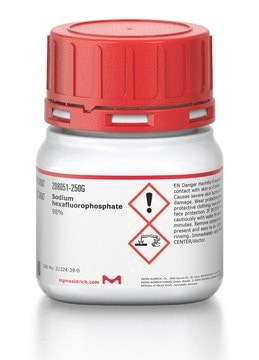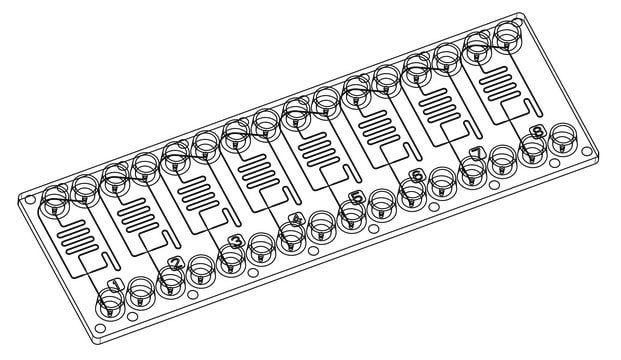931950
Sodium perchlorate
anhydrous, ≥99.9% trace metals basis
Sinónimos:
Sodium Perchlorate, Hyperchloric acid sodium salt
Seleccione un Tamaño
32,00 €
Seleccione un Tamaño
About This Item
32,00 €
Productos recomendados
grado
anhydrous
battery grade
Nivel de calidad
Ensayo
≥99.9% trace metals basis
Formulario
powder
impurezas
≤1000 ppm (trace metals analysis)
pH
6.0-8.0 (25 °C, 5%, aq.sol.)
mp
482 °C
solubilidad
H2O: 209 g/dL at 15 °C
trazas de anión
chloride (Cl-): ≤30 ppm
sulfate (SO42-): ≤20 ppm
trazas de catión
Fe: ≤5 ppm
K: ≤500 ppm
aplicaciones
battery manufacturing
cadena SMILES
[Na+].[Cl](=O)(=O)(=O)[O-]
InChI
1S/ClHO4.Na/c2-1(3,4)5;/h(H,2,3,4,5);/q;+1/p-1
Clave InChI
BAZAXWOYCMUHIX-UHFFFAOYSA-M
¿Está buscando productos similares? Visita Guía de comparación de productos
Categorías relacionadas
Descripción general
Aplicación
Envase
25 g in glass bottle
Palabra de señalización
Danger
Frases de peligro
Consejos de prudencia
Clasificaciones de peligro
Acute Tox. 4 Oral - Eye Irrit. 2 - Ox. Sol. 1 - STOT RE 2
Órganos de actuación
Thyroid
Código de clase de almacenamiento
5.1A - Strongly oxidizing hazardous materials
Clase de riesgo para el agua (WGK)
WGK 1
Elija entre una de las versiones más recientes:
Certificados de análisis (COA)
¿No ve la versión correcta?
Si necesita una versión concreta, puede buscar un certificado específico por el número de lote.
¿Ya tiene este producto?
Encuentre la documentación para los productos que ha comprado recientemente en la Biblioteca de documentos.
Artículos
Discover the role of electrolytes in sodium-ion batteries, to enhance performance, safety, and sustainability in energy storage solutions.
Filtros activos
Nuestro equipo de científicos tiene experiencia en todas las áreas de investigación: Ciencias de la vida, Ciencia de los materiales, Síntesis química, Cromatografía, Analítica y muchas otras.
Póngase en contacto con el Servicio técnico









